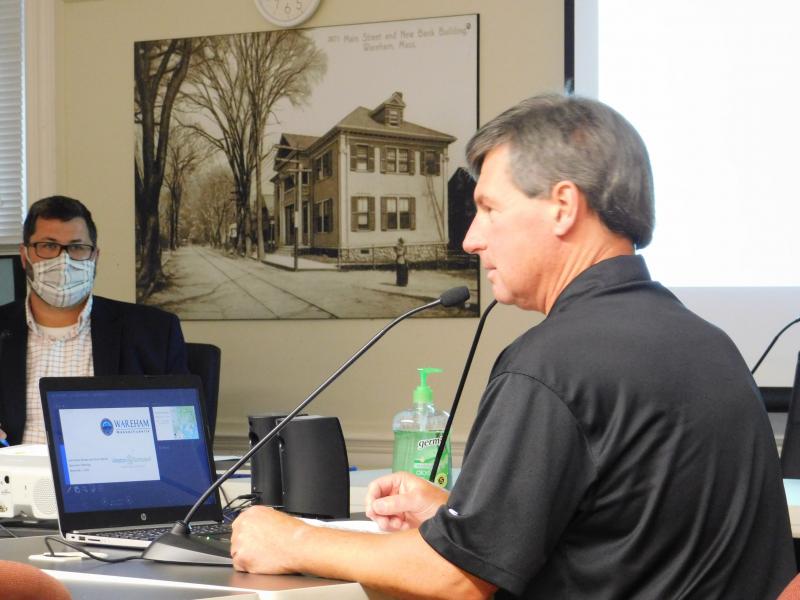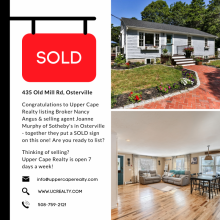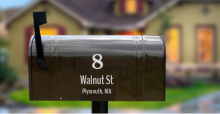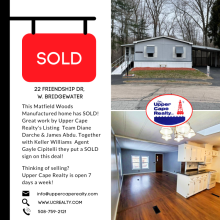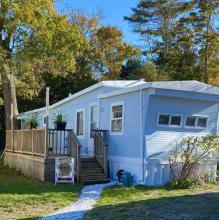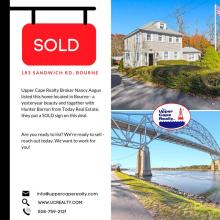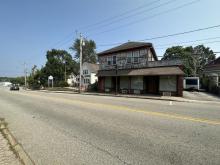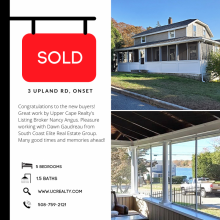Selectmen talk trash disposal plans for 2021
The town has two options for disposing of residents’ trash and recycling next year: Operating the Route 28 transfer station or hiring a company for town-wide curbside trash and recycling pick-up.
Both options will be far more expensive than the current $40 transfer station sticker, and even those who contract with private haulers for curbside pick-up will see their costs go up.
It’s likely that the issue will need to be decided at a special Town Meeting later this fall.
Even if a solution is voted on at a Town Meeting, getting that system ready to go by January 1 would be a struggle.
These and other points were discussed by the Board of Selectmen at their Tuesday night meeting, which featured a presentation by Mike Scipione of Weston and Sampson, a consultant hired by the town to help navigate the decision.
Since the 1970s, Wareham, Marion, and Carver have been able to dispose of their waste and recycling for free at the Covanta-SEMASS plant in Rochester. In exchange, the plant was able to dispose of waste and ash in the Carver landfill.
Now, the landfill is full, and the agreement between the towns is coming to an end at the end of December.
Because the towns have been getting free disposal for decades, having to pay the cost of disposing of trash and recycling will leave Wareham residents with a case of sticker shock.
“No matter what, if you have curbside now, that [cost] is going up. If you go to the transfer station, that’s going up. It’s not the town charging you more money, you’re paying the actual cost,” Town Administrator Derek Sullivan said.
The solid waste and recycling market tends to change quickly, but it costs about $80 per ton to dispose of trash and $100 per ton to dispose of recyclables. That cost will be reflected in what residents will pay for a transfer station, private trash hauling, or town-wide curbside pick-up.
Currently, 48 percent of town residents go to the transfer station and 52 percent hire a private hauler.
Now, it costs $40 to get a transfer station sticker. If the town chooses to operate the Route 28 transfer station, that sticker price would likely go up to about $295 — or even higher, if fewer than the current 4,600 households want to buy a sticker.
The current cost of a private hauler is about $36 per month, or $432 each year. That cost would go up to about $562 each year once haulers have to pay for the disposal of waste.
Going to a town-wide curbside trash pick-up system would likely cost about $313 per household.
Scipione emphasized that all the numbers he presented were ballpark figures, in part because there are so many unknown factors: How much would the town have to pay to acquire the transfer station? What would the market be like when the contract is signed? How many people would buy stickers?
The way the town and residents would pay for the new cost of solid waste is also up in the air, and may change after the new program begins.
To pay for waste disposal through taxes would require an operational override, which would need to be approved both at Town Meeting and by voters at the ballot box — a process that the town couldn’t complete by the end of this year. That would leave the town having to pay for the program through fees charged to residents.
No matter which option the town chooses, it’s not unlikely that it would take time to get started. And the town could be running out of time to secure the Route 28 transfer station.
Even if the town is able to secure a contract with a trash hauler after getting residents’ permission, the hauler would need time to get ready before beginning curbside pick-up.
Barrels for trash and recycling would need to be purchased, the company would likely need to procure more trucks and hire more staff, and routes would need to be plotted.
“If we put a swear jar out there for the town meeting, we’d probably be able to pay for the first year,” Sullivan joked.
The selectmen agreed that they should put out a survey to ask residents about their preferred option as soon as possible, especially because there are limits on how many people could gather for an in-person public information session.
The board also discussed an informal decision deadline at the end of September.



